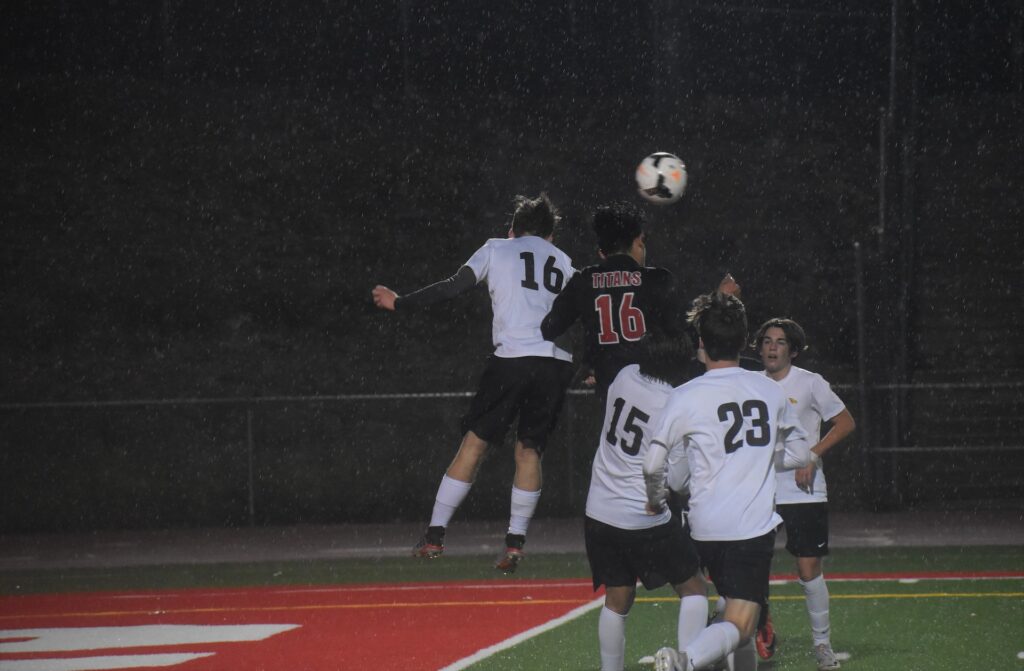Table of Contents
- So, what is a target man in soccer?
- The role of a target man (or target forward) explained
- What attributes does a good target forward need?
- When should you employ a target man in soccer?
- Three of the best target men in soccer
- Recap: The role of the target forward in soccer
Not so long ago, most soccer teams played with two central forwards – one poacher or attacking forward and one target man.
Things have changed so much in recent times that it’s difficult to predict how a team will line up and whether or not they will employ traditional roles.
So, in this article, we answer the question – what is a target man in soccer – and help you decide whether you should employ this position in your team.
So, what is a target man in soccer?
A target man is a central striker who is tasked with winning and holding the ball up for his teammates. Traditionally, target men have been big, strong, and good in the air, as well as dangerous from inside the penalty area.
Legendary target men are players like Alan Shearer, Robert Lewandowski, and Luca Toni, and they are great examples for young, aspiring target forwards to look up to.
In what remains of this article, we explain in detail what a target man is and how this role can help your team’s goalscoring chances.
The role of a target man (or target forward) explained
As the name of the role suggests, a target man (or target forward) is employed as the “target” of most attacks. Big in stature and good in the air, a target forward is responsible for winning the ball and bringing it under control.
This enables his teammates to get the ball forward quickly, as the target man can challenge the defenders and win the ball effectively, before bringing it under control.
While some target forwards are excellent in the air, others prefer the ball into their feet and use their lower body strength to protect the ball.
As soon as the target man has the ball under control, it allows the rest of the team to move forward and join the attack. When employed effectively, the target forward makes it so much easier for teams to turn defense into offense and brings the route one option into play.
What attributes does a good target forward need?

Although the role has changed slightly over the years, most target forwards are big and strong. This distinguishes them from diminutive forwards who rely on pace to get in behind, as target men usually play with their backs to goal for most of the game.
As a result of their height and power, target forwards are traditionally good in the air and can win their fair share of headers. As already mentioned, this helps their teammates move the ball quickly from back to front, as they can bypass the midfield.
First touch is also an integral attribute for any effective target man. There’s little point in being able to find a target forward if they’re unable to trap the ball and bring it under control for their teammates to build attacks around them!
Of course, as a central striker, it’s helpful if a target forward is a composed finisher who can find the back of the net. Although they are strong with their back to goal, target forwards should also be able to score their fair share of goals when the ball lands in the eighteen yard box.
When should you employ a target man in soccer?
There are several scenarios in which employing a target forward could be effective, so let’s run through a couple of them here.
Scenario one – As the sole striker when you’re the underdog and playing against a possession-based team.
If your opponents are likely to control possession of the ball and most of your work will be done off the ball, it can be advantageous to play with a target forward.
This is because as soon as you win the ball, you can play it into your target forward. The few seconds that it takes for the forward to bring the ball down allows his teammates to press forward and join the attack.
As a result, a target forward can be an important cog in a counter-attacking setup and is a useful weapon to employ when your backs are against the wall.
Scenario two – As one of two strikers in a conventional 4-4-2 formation
Although lots of coaches prefer playing with just one central striker in the modern game, there’s definitely merit in going with two up front in some instances.
If you employ a target forward alongside a pacy poacher or advanced forward, your forwards can play off one another and create chances by causing the defense different problems.
Some of the best partnerships in Premier League history have been a result of target man + poacher in a 4-4-2 setup – just look at Cole & Yorke, Shearer & Sutton, Crouch & Defoe, Henry & Bergkamp, etc.
To bring this article to a close, we want to remind you of three of the very best target forwards to have played in the modern era. If you want to learn how to play as a target forward, learn from these three legends!
Three of the best target men in soccer
Going through all of the target forwards in the history of soccer would be a thankless task, but here are three players who you can check out for more inspiration:
- Alan Shearer: The English Premier League’s all-time record goal scorer and a Geordie legend, Alan Shearer is perhaps the archetypal English number 9. Brilliant in the air and as strong as an ox, Shearer is one of the greatest target forwards ever to have played the beautiful game.
- Robert Lewandowski: Barcelona’s Robert Lewandowski is actually a much better soccer player than people give him credit for. Exceptionally good with his back to the goal, he’s superb with the ball at his feet, too. As pace has never been his strong point, there’s no reason why Lewa can’t go on until his early 40s – a terrifying prospect for La Liga defenses!
- Luca Toni: I genuinely don’t think I’ve seen a better battering-ram forward than Italy’s Luca Toni. The true journeyman striker, Toni played for 16 clubs in a career spanning 22 years! He was magnificent for Fiorentina from 2005-07 and even better for Bayern until he left the German giants in 2010. Outstanding in the air and extremely hard-working, Toni was a player that everybody wanted in their team. Maybe that explains why he played for so many clubs…
Recap: The role of the target forward in soccer
The bottom line is that a target forward can be a real asset to any soccer team, provided that the role is employed correctly.
The target man is responsible for winning the ball and holding it up, before bringing other people into play. A crucial role for any soccer team looking to build attacks with long balls.
If you enjoyed this piece explaining the role of the target man in soccer, check out our recent piece where we break down the role of the trequartista in soccer.

